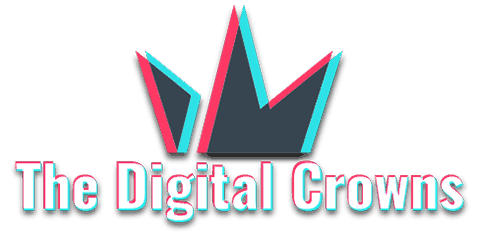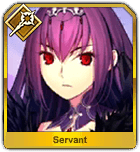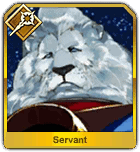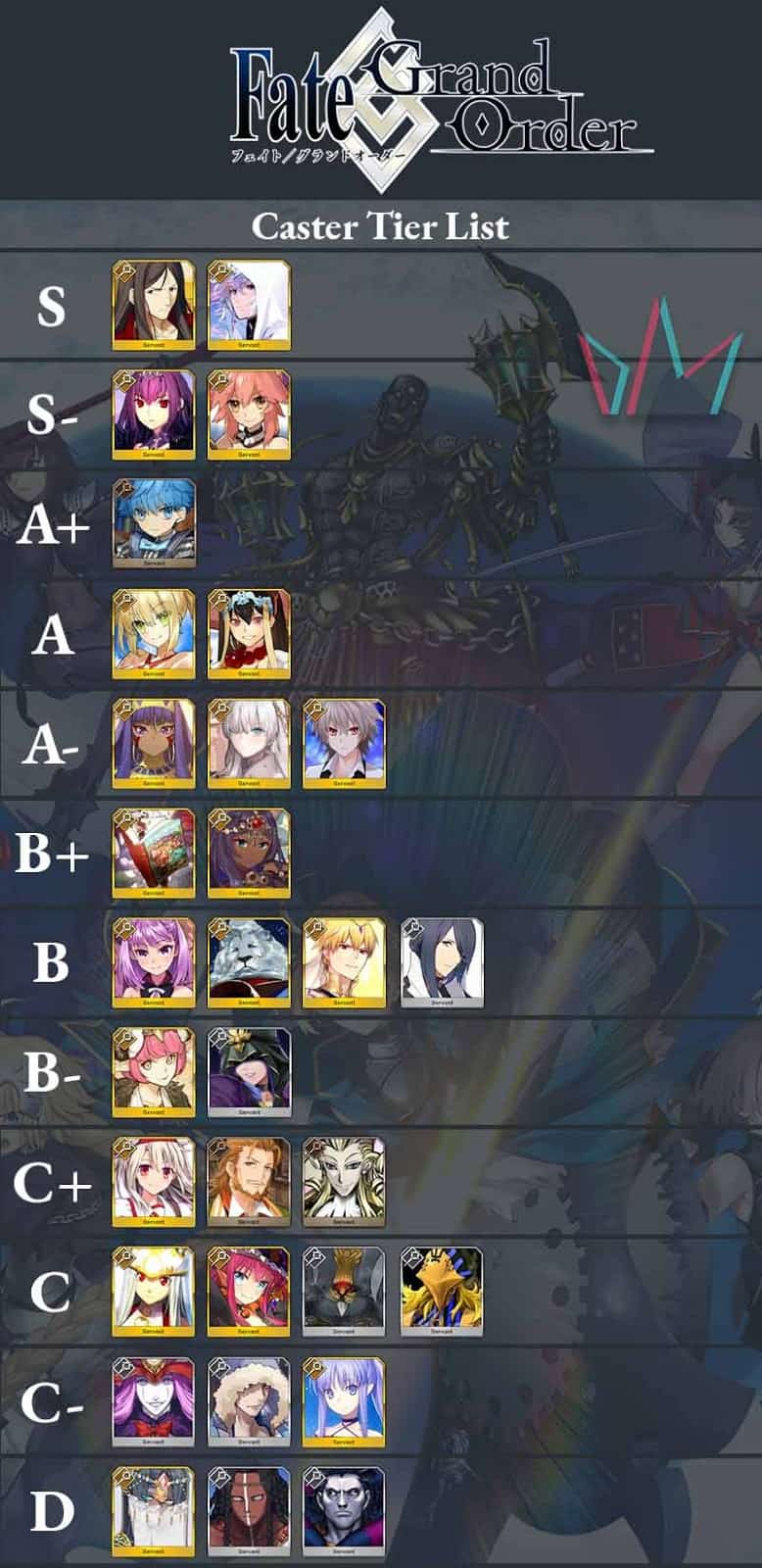
Players often wonder in a general sense which characters are stronger in gacha games. Particularly when it comes to high rarity rolls that can be extremely hard to chase. Grand Order has a bit of an interesting relationship with this as we don’t have nearly the power creep problem other games tend to have.
It does exist, it’s just not in the same magnitude, so where other games make tier listing nearly a necessity so that you don’t invest in a character that just can’t do content, here it helps you understand who’s weaker, though most characters are still viable. It’s a question of how hard you want to work or how efficient you want your clears to be, not whether you can at all.
The best Casters in Fate/Grand Order are Zhuge Liang (Lord El-Melloi) AKA Waver, Merlin, Scathach-Skadi, and Tamamo-no-Mae.
Caster is easily the most important class to begin discussions. It features hands down the best characters in the game. Because of the relationship between supports and damage dealers, it’s impossible to really understand the way high-end teams are built without discussing them. There really aren’t many options to avoid using Casters in your teams. The best Casters are easily the “Big Four”; Waver, Merlin, Skadi, and Tamamo.
Caster Tier List Methodology
A lot of tier lists cause arguments because their authors don’t make clear what does and doesn’t influence a placement decision. Here, we’ll cover the broad decision making principles for the list. This helps you to understand what was and wasn’t under consideration when placing characters and avoids troubled understanding when different people want lists that focus on power in a vacuum, others consider teams and whether there is a use for the character, etc.
It’s not really feasible to make a list that ranks the way everyone would like, and many lists try to strike a balance between multiple concerns without explaining which things they weighted more heavily. Here is a list of key points for this list:
- Assumption of Good Play: Many lists dock characters points for being harder to use. Here, we’re going to assume you know what you’re doing when using a character. A player can learn to count cards or align/desynch their skills effectively, a character’s placement should be based on their usefulness not how well they do when used suboptimally.
- No Points for Splashability: It’s a common question whether a character should be considered better because they fit into a greater number of teams. This doesn’t really help understand a character’s quality on its own, and while self-sufficiency is valuable, the ability to fit into numerous mediocre teams isn’t really all that relevant. Characters will still be ranked accordingly if they virtually require a particular expensive setup but as almost every character in the game can be used in a viable composition with a bronze character and a friend support selection, this usually isn’t the case.
- Usefulness over Raw Strength: Some characters are very good at things you just won’t really ever need. Tanks are a good example in GO. Several characters try, and theoretically succeed, at being strong tanks but the game doesn’t really support tanking as an archetype because most threatening encounters feature AoE damage. Because of this, it makes more sense to grade characters on how useful they are rather than how strong they are in a vacuum.
- Niche Evaluation: Some tier lists like to severely over or under evaluate niche characters by either only considering them with the niche on with the assumption you’ll never use them otherwise or merely evaluating the niche ability as if it were not on a niche, and then deducting a bit to make up for it. Here, we’ll spend time evaluating how useful a niche is rather than applying a blanket solution. Not every specialist is created equal.
- Farming vs. Challenge Quests: It’s impossible to avoid that far more time is spent farming in GO, but CQs are still important. Generally, most CQs favor Crit/Single-target characters, while farming is an NP game, but the opposite has been true in the past. Many tier lists cap characters at a certain tier if they cannot do both effectively and this inflates the position of mediocre characters who do two things okay over those who do one thing well. A character will only receive better placement here if they’re exceptional in both categories.
- Granularity: GO just isn’t the sort of game where large portions of the characters are unusable. Many GO tier lists try to tier like other games creating gridlock at the top because by the standards of other games where any character who can participate in hard content is a high B or low A, almost every character in GO qualifies. Here, a C is still a viable character, just one who doesn’t bring much to the table you can’t get better elsewhere.
- NP5 for Welfares and Friend Point Characters: While it’s sensible to rate gacha characters as if their NP level is low, free characters are rapidly going to stack up for consistent players and most will have access to them at NP5. Three-star characters who are not part of the friend point gacha will be considered without NP5 like any other gacha character.
Caster S-Tier
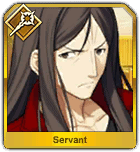
Zhuge Liang (Lord El-Melloi II) AKA Waver – S
While some may consider it a travesty not to put Merlin at the top of these lists, Waver really just does more than the Mage of Flowers. The real kicker here is that Waver was the first member of a very small group of characters with a 50% NP charge. He’s the cornerstone of many farming strategies, he can fuel panic NPs in any direction, his damage benefits are ever so slightly higher than most competition outside of a burst turn and he doesn’t care at all about where you use him.
There was a compelling argument prior to the release of Break Gauges that Waver had been eclipsed as the single best character in the game. With the greater focus on sustained damage required it’s now hard to argue against him. No character is perfect, but the original SSR caster makes a strong argument for coming close. Keep in mind that he is a Support like every member of the ‘big four’ and thus his power doesn’t come from actually attacking himself; if you’re particularly light on damage Servants you can always source them from the friend list, though.
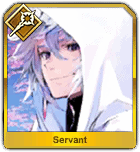
Merlin – S
Perhaps the single greatest example of power creep in the game even to this day. Merlin improved burst to such an extent that many players believe Break Gauges were introduced specifically to nerf him. Whether or not that was the intention, though, they succeeded. Merlin can still propel damage to the moon and has a kit overstuffed with almost any effect you could want, but that’s not as useful as it once was.
Burst can’t solve encounters before they even start anymore and when his invulnerability is on cooldown, you may find that Merlin teams feel a bit less survivable than all that healing would lead you to think. He’s also just undeniably a worse farmer than any of the other big four though Tamamo only helps farm with very specific characters so he gets the nod in that regard at least.
Scathach-Skadi – S-
Skadi is extremely potent, and you’ve probably heard people discuss how she “redefines the meta” but for most players, that’s a bit of hype and bluster. There are a handful of characters who the average player can expect to become wildly more powerful than before with Skadi alone; the rest often require heavy investment and the number who can perform the signature Skadi System loop in its ideal form without a max limit broken Kaleidoscope is sadly pretty small.
Outside of that, she’s a bit hamstrung compared to her hyper-powered peers in any challenge quests that she doesn’t cheese with a near-total lack of non-NP defensive options. She’s also the most reliant on being used with her particular card-type among the top tier options. Merlin and Tamamo can get away with supporting other types, but usually, the only reason to use Skadi with non-quick characters is her NP battery.
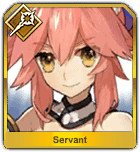
Tamamo-no-Mae – S-
The only member of the ‘big four’ without an NP battery still manages to eke out a position in the top tier thanks to the sort of silliness she enables. Like Merlin, she’s a bit more suited to Challenge Quests thanks to her “haste” effect lowering skill cooldowns and the way she can stall out hard fights. Tamamo heals way more than you’d think, and she keeps any sort of defensive option your other characters have flowing. Better yet, she minimizes the amount of time you spend without your damage skills on.
She’s insanely consistent and it can’t be overstated the number of fights that effective use of Tamamo can really smooth out for you. She even still has farming potential with a subset of Arts characters in the same fashion as Skadi, though this is less often accomplished as a ‘System’ using two copies of Tamamo and more often features fellow Fate/EXTRA alum Nero Bride. It’s expensive, requiring particular characters and particular CEs, but it can be done.
Caster A-Tier
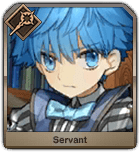
Hans Christian-Andersen – A+
If it weren’t for how prone Hans is to meeting an early (read: instantaneous) grave when faced with an unlucky crit, I’d place this Friend Point all-star alongside all the gold in S; Hans really is that good. He enables huge crits and packs in almost as many effects as Merlin with everything humming away and they’re not even small.
He’s a lot more inconsistent than his rarer peers thanks to chance-based buffs, but hitting even a few of his 80% chance rolls makes him quite powerful. Think of him a bit like an AoE Imperial privilege but with heavy crit benefits guaranteed attached. Unfortunately, as stated above, while his skills are on par with the best of the best, his stats reflect his rarity, so he can be pretty paper-thin if you get unlucky or are bringing him to a rider node due to a lack of the few solid Support assassins. Give him an honorary S when used with Ozymandias who guarantees his buffs and was in sore need of some crit bonuses anyway.
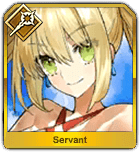
Summer Nero – A
Summer Nero features the highest attack up in the game, a huge NP battery, and a deck that can buster chain alongside her huge attack buff to make her feel like she’s ST and AoE at the same time. She’s an excellent farmer and an excellent Challenge quest choice, who features equal parts defense, offense, and utility in her kit. Nero earns her spot as one of the truly exemplary damage dealers.
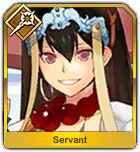
Xuanzang Sanzang – A
Of the upper-end single-target options, Sanzang is just better suited to the long encounters that characterize the CQ game. Basically her whole kit is devoted to NPing as much as possible in any way she can. She’s a good CQ option because of this and her debuff immunity but rarely farms unless there’s a single enemy wave around.
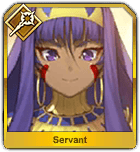
Nitocris – A-
Nitocris is a dedicated farming Servant, she really isn’t suited to anything but the most gimmicky of challenge content. She is, however, very good at said farming as she has a literal on-demand AoE NP. It doesn’t do much damage though, so she can require some support whether that be a potent CE, other characters, or Mystic Code babysitting to actually kill things. Still among the most consistent options for Caster farmers.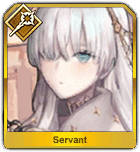
Anastasia – A-
Anastasia is basically an SSR version of fellow A-Tier entry Sieg. She’s markedly less stringent on what it takes to get her to loop, especially with her 50% battery smoothing things out. She’s less expensive than he is in most scenarios and can farm a greater number of nodes alongside being able to do a less perfect version of loop farming if you don’t have all the tools for the perfect version. All in all, she’s better than Sieg, but not massively so; however, she does less damage at NP1 than his free NP5 so she makes a worse nuke.
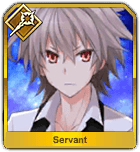
Sieg – A-
Truthfully, Sieg is pretty close to being a B, but being a welfare for free NP5 gives him very solid NP damage to pair with his generation and battery. He’s a very capable farmer but beware that he’s a little clunky and will require some investment to get clear times down. If you have the parts; he can loop some nodes but it’s inconsistent and expensive enough that he’s here more because his free NP5 puts his NP damage at the upper end of the spectrum for the class.
Check out the other classes and their tier list!
- Archer Tier List
- Lancer Tier List
- Saber Tier List
- Extra Class Tier List
- Berserker Tier List
- Assassin Tier List
- Rider Tier List
Caster B-Tier
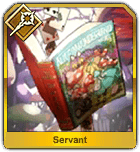
Nursery Rhyme – B+
Rhyme is an extremely solid damage dealer for a Caster, but she can have some real issues with target swapping. Her NP is a lot like a wet noodle and the crits are what you came for, but it can take some cleverness to make her turn that crit damage into quick clears instead of overkilling enemies by a lot. When just focusing down a boss, that isn’t an issue though, and slow clearing of the pre-boss waves is usually not dangerous.
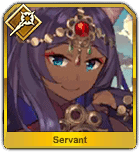
Queen of Sheba – B+
Sheba can be a bit luck reliant, but it’s undeniably how capable she is when things go her way. She stacks all three buff types for critting and on her most impressive turns, she looks a lot like better Nursery Rhyme. However, she’s a Crit-based Caster with no star absorption benefits when she wants to do damage, and wants to follow Sherlock’s pattern of stealing the spotlight for a single turn before fading into a support.
That loop can work really well but limited time crit absorption is fairly hard to source if a Servant doesn’t have it in their own kit, and Sheba would preferably pop her skill, go in for a big brave chain and then not take stars afterward. So, star absorption CEs don’t work since she’ll keep stealing stars on bad turns. This can make her a bit tricky and expensive and holds her back from being the premiere option for 4* Casters. She does come online extremely well if you have something like CasGil and two 2030s (The dedicated damage dealer in this comp has a lot of options) but that’s prohibitively expensive and specific.
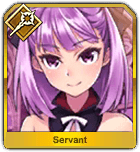
Helena Blavatsky – B
Helena doesn’t really encourage much to say about her. She’s just good, and her kit is very simple. She’s one of the cheapest ways to access an AoE NP battery, but her cooldowns are criminally long. Best used for story progress and farming if you need her.
Thomas Edison – B
There are some pretty uncommon buffs floating around with Edison. He has a five turn star regeneration skill and can overcharge a party member’s NP. All-in-all, he’s a utility pick, as he lacks any direct throughput bonuses, unless they exist as a servant on your team’s overcharge effect. He’s a useful toolbox, but it’s a tough pill to trade damage for utility.
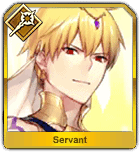
Caster Gilgamesh – B
CasGil only effectively does one thing; support Arts Crit compositions, but he does it extremely well. His skills cover for damage increases and star generation extremely well, and Arts Crit has trouble producing stars on its own. He totally lacks the sort of general applicability his Archer self boasts, but he covers a sorely needed niche while not being as paper-thin as his notable replacement, Hans. He is best used as a challenge quest character, though, and lacks any defensive support if he doesn’t charge his NP, which can make him a little unreliable since he may need to spend cards at inopportune times to have defenses ready.
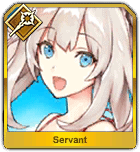
Caster Marie – B
Marie is like a sort of backward Hans. She produces a lot of stars and is extremely tanky. However, half of her damage benefit is locked behind using her otherwise very underwhelming NP. She wants to be a crit support, and in some ways, she succeeds, but her long cooldowns can be crippling for a team style that wants to be as consistent as possible. She ends up being just fairly good since she pressures you to finish out a node before her buffs wear out the first time. It’s at least not particularly hard for her to live long enough to wait out her cooldowns but how useful is a support if their team dies around them?
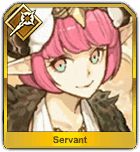
Circe – B-
Circe is really quite good when enemies are susceptible to her pig debuff, but certain enemies (seemingly just ones whose sprite would break when turned into one) aren’t which can make her already sparse kit feel fairly barren. There’s quite a lot of consideration given to the fact that she can stun a priority target for a long time while she hammers away but she doesn’t do much else, and that trick doesn’t always work.
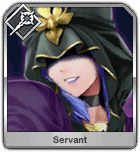
Medea – B-
Medea doesn’t bring a lot of damage to the table, with no skills at all devoted to propping up her numbers, but nonetheless she’s a regular mainstay for Challenge Quests because no one else in the game denies enemy buffs quite like Medea. Usually, overarching fight mechanics are unremovable, but moment-to-moment buffs can, and likely will be removed if you bring Medea; Rule Breaker is available so frequently you’ll probably see it more than her Buster card.
Caster C-Tier
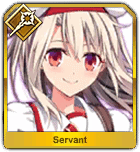
Illyasviel – C+
Illya was actually fairly good for a few months after her release. Her NP damage is just leaps and bounds ahead of any competition within the Caster class, but comes with a caveat; she can only do it once. Her NP leaves her with a lingering debuff that lowers her damage and with her mana burst on cooldown later cards and brave chains will just be much, much worse than her competition. Prior to Break Gauges, she could just oneshot things and this wasn’t an issue. Now, Nero and Sanzang both handily push her out.
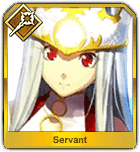
Irisviel – C
Iris is one of the game’s best healers. Unfortunately, she’s a dedicated healer and those just aren’t in regular demand. When she’s useful, she usually completely breaks a fight but otherwise, you’ll just be bringing her along because you want to. With a stall team she can complete nodes, but those nodes could’ve been finished faster with mediocre balanced teams.
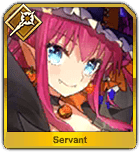
Elizabeth Bathory (Halloween) – C
There’s not much to say about Liz. She’s a welfare unit. She has Innocent Monster which is always good, but otherwise, there’s not much else. She’s perfectly okay, but she’s just a simple Mana Burst and bash character who likes crit stars. Treat her a bit like a Hans with most of his support benefits swapped for okay damage; it’s not a great trade.
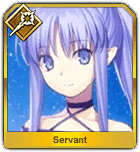
Medea Lily – C-
It hurts to put her down here because Medea Lily is insanely good at healing and avoiding debuffs. She just has no way to stall an enemy NP or to survive it, so all that time spent healing up and shrugging off debuffs is going to evaporate unless you bring along a defensive option to keep the party alive through those huge hits. Dedicated healers are already not particularly necessary in GO, but a healer who can’t even do it without outside help is worse. You may still find a use for her in particularly debuff-heavy fights that no other cleanser can keep up with and that saves her from consignment to the bottom of the barrel.
Caster D-Tier
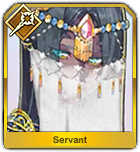
Scheherezade – D
Scheherezade is, to say the least of it, fairly bad. She has a kit that’s split between targeting kings (A trait which includes queens) and males. Unfortunately, there are, with the possible exception of obscure class-swap enemies appearing in a single event, no male Assassins with the king trait. She’s abysmal operating outside her niche, and merely okay when compared with class-advantaged options within it. Her damage on normal attacks is very poor, she’s not amazing at recharging her NP, and is reliant on a long-cooldown single turn buff to accomplish even that. With the exception of her crippling attack down debuff for enemy kings, pretty much anything Scheherezade can do, a Friend Point character can do better.
